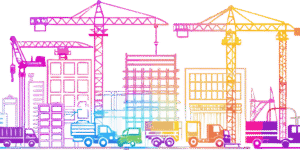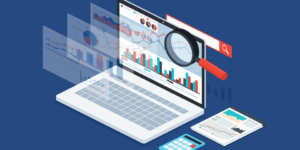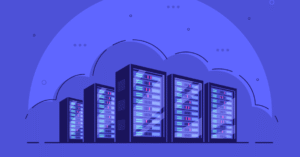In November, The Federal Reserve Open Market Committee voted to lower interest rates by 25 basis points. It was the second rate cut in two months and a signal that more are coming. Financial industries are eager for lower rates, and a stock market rally and an easing in the 10-year treasury following the Fed’s rate-cut announcement provided optimism. While the celebration is understandable, it might be unwarranted. The broader economic climate remains complicated, and interest rates are unlikely to fall as quickly as they climbed.
Federal Reserve Chair Jerome Powell described this complex environment in his comments following the November meeting, and other experts have weighed in on the fragility of the moment. Here is a closer look at the Fed’s interest rate strategy and what experts expect in 2025.
Aiming for a Soft Landing
A soft landing—a difficult economic phenomenon where interest rates are strategically raised without triggering a recession—is within The Federal Reserve’s grasp. Since it began increasing rates in 2022, Powell has been clear that a soft landing was the Fed’s goal, and it appears he may accomplish it. However, it requires a gentle approach. “We’re mindful of the risk that we go too far, too fast, but also of the risk that we don’t go far enough,” he said. “It seems like we’re right where we need to be.”
In the past, Powell has routinely made it clear just how difficult it is to balance interest rate give and pull. In April 2024, he told the public that it should expect rates to stay higher for longer, but by July, he showed concern that the Fed may be moving too slowly in lowering rates. “Reducing policy restraint too late or too little could unduly weaken economic activity and employment,” he said. Looking at his comments over the year, and The Fed’s fluctuations between meetings shows how difficult it is to predict the outcome even a month in advance.
The Fed is balancing several economic metrics and real-time data to decide whether or not to increase rates and by how much—and it can be difficult to predict what The Fed will see in the data. The Federal Reserve is trying to stay nimble to respond to changing data and accomplish its goal of a soft landing. “If the economy remains strong and inflation is not sustainably moving toward 2%, we can dial back policy restraint more slowly. If the labor market were to weaken unexpectedly, or inflation were to fall more quickly than anticipated, we can move more quickly,” said Powell. “We’re very focused on getting the job done for the American people.”
Settling into a Higher for Longer Environment
Although interest rate movement is difficult to predict, the complexity of the economic environment will likely keep rates higher for longer. The economy is healthy, but inflation is a particular sticking point for the Fed. It continues to trend above the 2% target and at a higher rate than expected. The Committee expects inflation to remain in the current range, which could contribute to a decision to keep rates higher for longer. In addition, the Committee is concerned about the government’s fiscal policy, which Powell called “unsustainable” due to the large deficit. “It is important that be dealt with,” he said. “It is ultimately a threat to the economy.”
In light of these indicators, Powell said the Committee plans to take a cautious path forward to navigate these obstacles and achieve a soft landing. “The economy is not sending any signals that we need to be in a hurry to lower rates,” he said following the November meeting. “The strength we are currently seeing in the economy gives us the ability to approach our decisions carefully.”
A look at the minutes from the November meeting shows the Committee’s effort to move slowly on increasing interest rates. Committee members said during the meeting, that it “would likely be appropriate to move gradually toward a more neutral stance of policy over time.” With stronger-than-expected economic performance and a stabilized job market, the Fed may decide to hold back a rate cut in December.
Cautious Optimism for More Rate Cuts in 2025
The investment community has mixed feelings about the Fed’s path forward. Of course, many are nostalgic for the days of 0% interest rates, but many are also honest about the need for higher interest rates to support economic stability. “Without a credit crisis emerging, which is not evident at the moment, the greater risk to markets is adding stimulus to an already inflationary leaning environment,” said Byron Anderson, head of fixed income at Laffer Tengler Investments. “Many will disagree but this was the perfect point for the Fed to pause and reassess the landscape through the end of the year. If you believe the economy is on good footing, the risks to inflation are increasing with every rate cut they do.”
While there is some consensus that rates will (and maybe should) remain higher, investors also expect The Fed to continue to reduce rates next year, albeit at a slow pace. The New York Times reports that policymakers expect rates to fall by 25 basis points in December. JP Morgan’s forecasters share that outlook for December, and they anticipate four more rate cuts next year, ending the year at 3.5%. This is lower than its initial outlook, which pegged the terminal rate at 3.5% at the end of 2025.
The commercial real estate industry is closely watching the Fed’s interest rate policy to determine a path forward in 2025, but investing in technology can help offset some of the interest rate cost burden. Modern real estate development software like Northspyre leverages automation, analytics, and AI to eliminate tedious administrative tasks and shore up balance sheets to deliver better and more predictable returns to commercial real estate developers. Users of the platform see an 80% decrease in manual administrative work, a 66% reduction in costs, and 40% time saved per employee. Northspyre has delivered meaningful savings to its clients, and it can go a long way to helping a deal make financial sense, no matter what the Fed decides to do.
Download our ebook How to Cut Real Estate Development Costs by 2-6% to learn more about how you can transform project delivery and yield higher returns.



